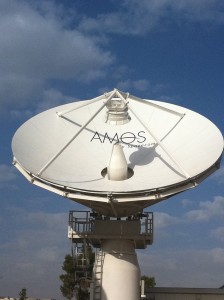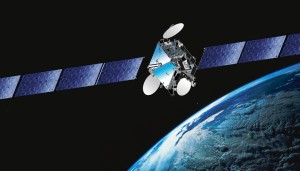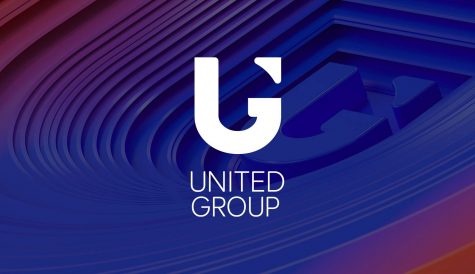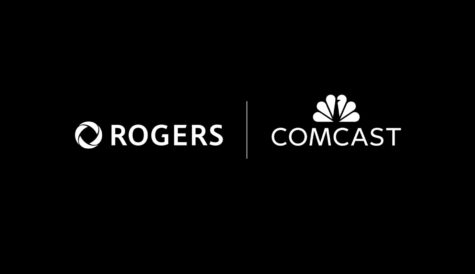Fragmentation and competition in CEE’s pay TV market
 The CEE pay TV market remains characterised by fragmentation and intense competition, but operators are seeking to use all the infrastructure choices at hand to deliver an increasingly sophisticated basket of services, including OTT and multiscreen. Stuart Thomson reports.
The CEE pay TV market remains characterised by fragmentation and intense competition, but operators are seeking to use all the infrastructure choices at hand to deliver an increasingly sophisticated basket of services, including OTT and multiscreen. Stuart Thomson reports.
Pay TV operators in central and eastern Europe have adopted a wide variety of strategies in line with the particular circumstances of the individual markets in which they operate, and it is difficult to make sweeping statements about overall trends in the market in a region characterised by wide disparities in income and demographic profile within and between different countries.
However, certain themes have become common over the past year: an accelerated move to consolidate in certain cases; the use of multiple infrastructures to reach the maximum number of potential customers; and the extension of offerings via multiscreen and OTT services either to glue subscribers to the pay TV service or to extend reach.
Infrastructure
One trend that has been noted is a slow decline in cable numbers as analogue subscribers migrate to digital-terrestrial, satellite and occasionally IPTV platforms, that provide alternatives. Satellite in particular continues to perform strongly overall, although there is in many cases intense competition between different providers in a number of territories. A number of telecom operators have also sought to use satellite to extend their reach and quickly put in place a TV offering that can be bundled with other services.
For Jean-Philippe Gillet, vice-president of sales, Europe and the Middle East at Intelsat, it is difficult to make meaningful generalisations about the region and movements in pay TV within it. “It’s going in a lot of different directions,” he says, highlighting the case of Satellite BG’s closure in Bulgaria at the same time as a new platform launches there and two new services launch in Romania.
These cases offer examples of the way in which satellite pay TV in a number of territories continues to defy received wisdom. In Romania, Orange is the latest entrant in the market. Its new TV package is designed to complement its existing mobile service, enabling the company to offer full multi-device services to its customers. GlobeCast is providing encryption and encoding to take Orange Romania’s channels to the point of uplink, preparing them for broadcast on capacity it has leased from SES. The DTH package is using multiple transponders on Astra’s 31.5° East orbital position and will be broadcast in the DVB-S2 and MPEG-4 technical standards. Orange Romania CEO Jean-Francois Fallacher said that Orange was planning to offer a service built on a large number of HD channels, good satellite coverage, dedicated customer care and the provision of multiscreen services.
Orange’s launch follows hard on the heels of that of Freesat, a low-cost platform broadcasting from the Eutelsat 16A position. This platform includes popular Romanian commercial and public channels, and general manager Serban Belenes said that the lack of a monthly bill and no long-term commitment would be key assets for the platform.
In Bulgaria, the collapse of Satellite BG came only three months after the launch of a new white-label platform. Transmission services provider Neterra, broadcasting via Telenor Satellite Broadcasting’s Thor 6 satellite at 1° West, is offering third-party operators a premium pay TV platform. Neterra said at the time of the launch that it expected the first operators to sign up to the platform in the next few months, taking a range of over 60 of the local market’s most popular local and international channels. Neterra also unveiled plans to expand the line-up of channels it offered to include local and international HD services.
“The basic idea is to contact local distributors that could be cable networks that want to extend their services beyond their existing reach or they could be content providers looking to deliver to new services,” says Leiv Svenning, head of central and eastern Europe, Telenor Satellite Broadcasting. Svenning says that Bulgaria should show whether the concept works. If so, he envisages that similar platforms could feasibly be launched in neighbouring countries such as Romania and Serbia. Svenning sees the latter as an underserved market, dominated by a single provider, that could provide space for growth in the near future.
Differentiation
With competition between providers intensifying, satellite and other pay broadcasters are seeking to differentiate their services, for example by expanding the number of HD services they offer. “What I see for sure is that new HD channels are being launched as part of the current bouquets,” says Gillet. Romania’s RCS & RDS recently added an HD bouquet to its line-up while UPC DTH is adding more HD content across its territories. Further afield, operators in Russia such as Tricolor TV and Orion Express are looking to HD as a way to upsell customers.
“There is no doubt it’s across the board. More and more viewers are getting more HD content,” says Gillet. However, the launch of HD does not mean that operators can easily charge more and raise average revenue per customer. “It doesn’t mean that ARPU is going up and this is what is most challenging,” says Gillet. The key problem, he says, is that pay TV in central and eastern Europe has largely failed to consolidate on the model of western Europe, where markets are typically served by a single DTH provider, in may cases facing a single cable operator.
“You don’t see that in central and eastern Europe. You see some consolidation in cable but new players emerging in DTH,” says Gillet. The result, he says, is that consumers get a “great return on their money” when they sign up for pay services in highly competitive and price-sensitive markets.
“It’s not predictable. If you look at Romania everyone knew there were too many players,” says Gillet. The reduction in the number of DTH providers from five to three through consolidation seemed to show that the country would follow the pattern set in more mature pay TV markets. However, this year that process has been reversed – in a market where there is no growth. Gillet believes there is nevertheless still room for new platforms to find a place. However, increasingly, he says, “it will be difficult for these players to get new subscribers” without trying to take away customers from their rivals by offering attractive pricing.
Telenor’s Svenning agrees that growth in the region is coming in part from the launch of HD channels. “There are more new channels being added but there is also the conversion of SD to HD channels. That is a driver for capacity growth. HD is a key driver and it is now becoming affordable for the end customers, both in terms of prices of TV sets and set-top boxes,” he says.
Svenning sees some signs that consolidation is now taking place, citing the sale of RCS & RDS’s businesses in markets outside Romania and Romtelecom’s 2011 acquisition of Boom TV as examples.
One possible explanation for the relatively low level of pay TV charges in the region identified by Gillet is that telcos have been particularly active in the DTH market in central and eastern Europe. These companies may primarily be interested in reducing fixed line churn and growing their mobile base. TV can be seen as a way to offer added value rather than as a profit centre in its own right. In such an environment, it is difficult for smaller pure-play pay TV providers to make a business case that stands up.
In general, a key overall trend over the last year has been relatively slow growth as the economic headwinds buffeting Europe take their toll.
 “For this year up to now there has been modest growth. It’s not skyrocketing,” says Jakob Keret, senior vice-president, sales, Europe, North America and the Middle East at satellite operator Spacecom. Keret notes that in the markets served by the Israel-based satellite operator, Ukraine has seen strong growth in the number of free-to-air channels launching, while to the west in Hungary, key customer Magyar Telekom has launched more HD channels.
“For this year up to now there has been modest growth. It’s not skyrocketing,” says Jakob Keret, senior vice-president, sales, Europe, North America and the Middle East at satellite operator Spacecom. Keret notes that in the markets served by the Israel-based satellite operator, Ukraine has seen strong growth in the number of free-to-air channels launching, while to the west in Hungary, key customer Magyar Telekom has launched more HD channels.
The launch of HD services is one way in which operators can upsell their existing subscribers to new packages or cement their loyalty. HD has been slower to take off in central and eastern Europe than many expected but there are signs that this may be changing as penetration of HD flat-screen TVs and reception equipment gains traction. “There is a trend of moving SD channels into HD in Hungary. The competition is doing the same. It is happening this year,” says Keret, who adds that the addition of HD services is a more significant source of capacity demand in the country than the launch of new channels.
Consolidation
Satellite operators active in the region have also noted that consolidation and retrenchment is evident in a number of markets. At the same time they believe that new launches are still possible – particularly from telcos seeking to add TV to their other services in order to provide bundled offerings.
However, Keret believes that those telecom operators are more likely to grow by acquiring existing players that may be struggling to make a standalone business make sense. Spacecom customer Slovak Telecom’s recent acquisition of the local version of Digi TV from Romania’s RCS & RDS is one example of this direction of travel. The sale was the latest move by the Romanian pay TV leader to pull back from international operations, with others including the sale of its Croatian operation to Telekom Austria-backed Vipnet.
Keret believes that telecom operators across the region are seeking primarily to expand their overall subscriber base and are using satellite to do that – with the ability to bundle TV with broadband and telephony as well as the ability to upsell existing fixed line customers to TV. “I think there is a trend of expanding existing customer bases and maintaining good offerings with internet, fixed line and IPTV [in addition to satellite],” he says. “It’s a multiplay offering. The key from [the operator’s] perspective is the number of subs. The bigger the number the more solid the foundation. They put a lot of pressure on not losing end customers but gaining more and to do that you can acquire existing DTH operators.”
Keret believes satellite will continue to grow and will not be reserved for rural areas outside the reach of terrestrial infrastructure “It’s more about bundling and the ability to offer a comprehensive service. Satellite infrastructure is very strong all over Europe,” he says.
Satellite is increasingly seen as simply one possible distribution strategy amongst many for the region’s operators.
“Most of our customers are addressing all of the segments at the same time. They use DTH as a linear service. Then they will have broadband and OTT offerings. One operator could have multiple products,” says Gillet.
OTT and multiscreen
The overall direction of travel is therefore for all operators to expand into the multi-play business, offering a range of voice, video and data services over multiple networks, and to complement their primary TV offerings with non-linear, OTT and multiscreen TV services.
A good example of an operator that is seeking to branch out and find new revenue opportunities is Poland’s nc+, the product of the merger of the former Canal+-backed Cyfra+ service and TVN-backed n.
“Multiroom is a clear revenue driver. And there is still growth potential in it as TV reception is becoming ever more a personalised experience,” says Jan Frelek, new business development director at nc+. “VOD is another service satisfying the personalisation needs. Monetising VOD is more challenging, but we are getting positive results with it. DVR and HD have become technical commodity with no potential for incremental revenue.”
As in other markets, Poland has seen growing interest in consuming content on tablets, and nc+ has sought to address this new market by launching a multiscreen service – nc+ Go – combining live and on-demand content. “Judging by the service KPIs we are confident about the demand. Though monetisation will be challenging as on-line environment offers substantial number of free of charge alternatives,” says Frelek.
nc+ has also launched nc+ Go@Home, which enables channels to be securely streamed over WiFi from the set-top box in the home to client devices, enabling subscribers to view all the content available on their main screen on other devices within the home.
That strategy includes supplementing linear pay TV offerings with OTT services – a strategy followed by United Group in its territories in the western Balkans. The group was recently established to bring together a number of different entities jointly backed by private-equity group Mid Europa Partners and the European Bank for Reconstruction and Development, including Serbian cable operator SBB and its satellite offshoot, Total TV, and cable operators Telemach Slovenia and Telemach Bosnia-Herzegovina.
Like a growing number of operators, United Group has sought to complement its existing pay TV services by delivering a multiscreen service to tablets and smartphones. It plans to follow that up by launching its own OTT service to target off-net users.
“When we decided to launch OTT, we had several ideas in mind. With increasing penetration of smartphones and tablets, we decided to bring the best of our TV offering – both linear and non-linear – to those different devices as an add-on to our digital TV service,” says Victoriya Boklag, vice-president, marketing and sales, United Group. “We strived to unify user experience and interfaces across different devices including the main TV screen, and I think we’ve done a pretty good job. The next idea we want to experiment with this year is to offer an OTT box as a primary pay TV subscription service outside our footprint and on our FTTB networks.”
United Group marketed the multiscreen service as D3 Go, a unified brand that could be extended over the three countries – Serbia, Slovenia and Bosnia-Herzegovina – in which it operates. The operator already used the D3 brand for its digital TV service across all three territories, even though the company operated under different names – SBB in Serbia and Telemach in Slovenia and Bosnia. It plans to use the brand D3i for the off-net OTT service.
According to Boklag, D3 Go currently reaches about 10% of United Group’s digital subscriber base with an average of two devices addressed per customer. The service is also offered as part of a bundle with the group’s DTH service, Total TV, and broadband internet. “For the existing customer base, we see multiscreen services as fantastic drivers for new bundles and contract renewals, but not for additional revenues. The vast majority of our D3 Go customers use it for free as part of some bundle,” says Boklag. “What I found extremely interesting is that D3 Go has the highest level of satisfaction according to customer surveys, making it a pretty sticky part of the bundle. On the other hand, we think it will be possible to monetise OTT through off-net services that we are planning to launch this year.”
United Group was created in part to deliver scale, providing synergies in content and technology procurement across multiple platforms in different countries, as well as enabling the sharing of expertise. The group has established clear business lines under complementary brands that are designed to work together to maximise reach. SBB and Telemach deliver fixed line services, including pay TV, over their own networks, while D3 Go is the brand used for on-net OTT services targeting multiscreen devices. D3i is the unified cross-territory brand for off-net services while Total TV, the group’s satellite offering, targets subscribers outside the fixed network footprint. “The underlying idea for the brands is not to compete, but to be able to address all subscribers on the market, regardless of their location and infrastructure,” says Boklag.
Boklag believes there is still room for growth across the territories in which the group operates, and that this can be achieved by offering appealing bundles using a variety of infrastructure choices. “There is still a lot of potential in the region. In most of the markets where we operate, penetration of pay TV and broadband is quite below the eastern European average, and fixed telephony is still widely used across the region,” she says. “The natural demand for our services is there, so we remain focused on creating attractive bundles that will drive subscribers to choose us over other available offers and on maintaining the highest level of customer experience.”



